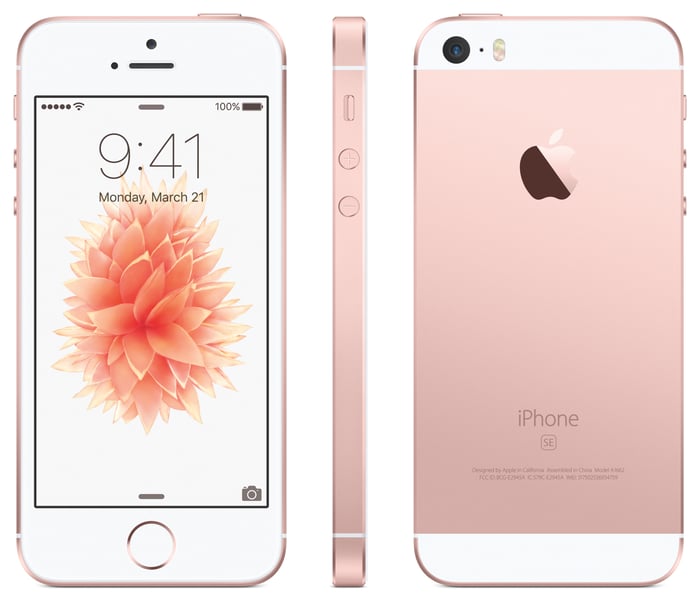In early 2016, Apple (AAPL 1.62%) introduced the iPhone SE. It was effectively an iPhone 6s transplanted into the body of a tried-and-true iPhone 5s.
The device had a few functions in the marketplace. First, the iPhone SE allowed Apple to sell a capable smartphone at price points that it couldn't address with its higher-end models. Its second function was to try to attract iPhone customers who wanted compact devices with high-end specifications.

Image source: Apple.
The iPhone SE ultimately seemed to serve its dual role well.
For a while, there have been rumors that Apple is planning to refresh the iPhone SE in the first half of this year. Although the iPhone SE is still quite a capable device that offers good performance for the dollar, it could certainly benefit from both form-factor refinements as well as internal specification upgrades.
Respected analyst Ming-Chi Kuo with KGI Securities, in a recent research note (disseminated by MacRumors), expressed his skepticism that Apple would launch such a product in 2018.
Let's take a closer look at the details.
Apple is resource constrained
Kuo thinks that Apple's iPhone development resources are currently "used up" in the development of the flagship iPhones that Apple intends to introduce in the second half of 2018.
The analyst offers up the delayed rollout of the iPhone X last year as evidence that Apple's resources are already spread too thinly.

Image source: Apple.
"We think [Apple] will do all it can to avoid repeating the mistake of a shipment delay for the three new [iPhone] models," Kuo said. "As such, we believe Apple is unlikely to have enough spare resources to develop a new iPhone model for launch in [the second quarter of 2018]."
A minimal effort -- if it happens at all
Kuo goes on to say that if Apple is planning to launch a next-generation iPhone SE in the first half of 2018, then it'll effectively be an enhanced version of the current model. This would mean internal improvements like the widely rumored move to an A10 Fusion processor as well as possible camera quality enhancements, rather than fundamental form-factor changes.
If Kuo is right about Apple being resource constrained, then such an improvement would make sense. After all, Apple has already developed the technologies that would go into a refreshed iPhone SE, so it would be a matter of assembling those technologies into a new package rather than developing fundamentally new technologies (which is significantly more difficult).
The good news is that internal specification upgrades could be an easy, low-risk way to try to boost iPhone sales, particularly in cost-sensitive markets. The bad news is that without fundamental feature and/or form-factor improvements, the magnitude of the iPhone sales improvements -- at least due to the introduction of an updated iPhone SE -- will probably be fairly limited.
The Foolish takeaway
Ultimately, there's going to be a market for iPhone SE-like devices, and it's important that Apple regularly refresh the product to try to keep demand high. My bet is that Apple, indeed, will introduce a new iPhone SE this year, but the odds are probably in favor of such a device being a minor upgrade rather than a big overhaul.
I think an internal specification bump will be enough to help boost iPhone SE sales, but with larger improvements to the device in future generations (e.g. new display, narrower bezels, sleeker form factor), Apple has the potential to amplify that growth considerably.
Perhaps that's what Apple has in store for the product category in 2019 or, more likely given the glacial pace of iPhone SE refreshes, 2020.





